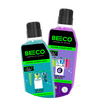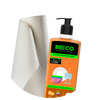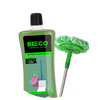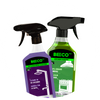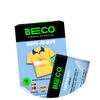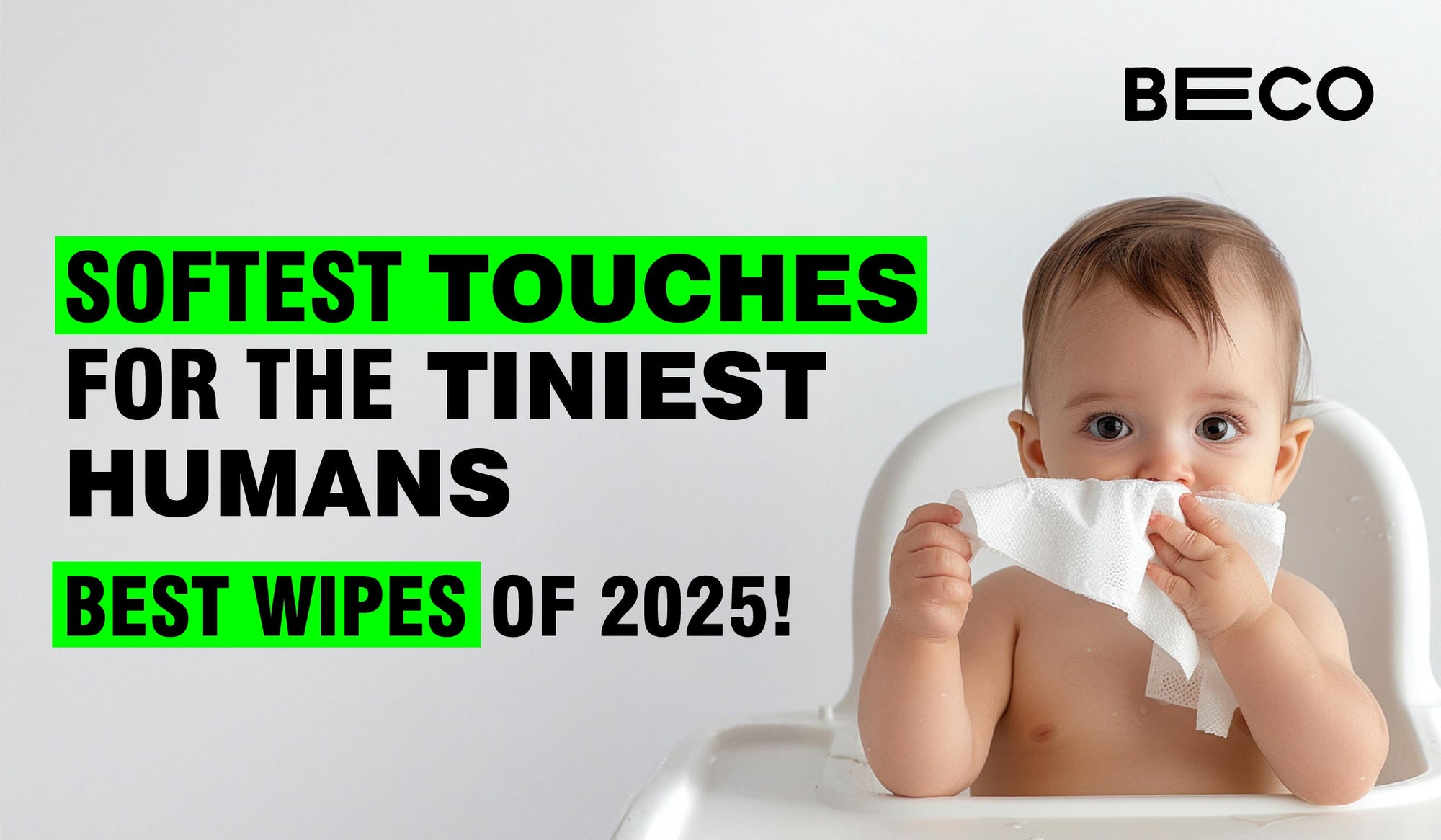Settling the Great Paper Debate: Napkin vs Tissue Paper
Sippy cups topple, cookie crumbs scatter, and in that moment when your toddler smears yogurt across the table, your quick fix tissue usually ends up a puddle in your hands. Welcome to the great cleaning puzzle where choosing between napkins and tissue paper actually makes a difference.
We use both every day after meals, in the car, at our desks; yet few of us can actually explain the difference between napkin and tissue paper. They look similar, feel similar, and both rescue us from life’s little messes. But here’s the truth: even though napkins and tissues share a family tree, they lead very different lives!
From fine dining elegance to on-the-go convenience, the right pick makes every cleanup smoother, smarter, and a little more sustainable. So, let’s unfold what separates the wipe-at-dinner from the wipe-on-the-run.
Napkin vs Tissue Paper: The Real Difference
At first glance, they’re the same. Both napkin and tissue paper are made from the same material; paper pulp. But their purpose, design, and durability are where the lines and folds start to differ.
Napkins: The Meal-Time MVPs
Napkins are built for moments that involve food, friends, and sometimes, clumsy cutlery. Whether paper or cloth, they’re meant to sit gracefully beside your plate and catch the inevitable crumbs, spills, and sauce drips.
-
Purpose: For dining and serving
-
Material: Thicker, sturdier, and often decorative
-
Where you’ll find them: On your dinner table, in restaurants, and beside every proud host who cannot imagine a dinner without napkins by his side.
You can even instantly elevate your dining setup with our Bamboo Serving Napkins; they’re soft, sustainable, and fancy enough to impress every last of your guests.
Tissue Papers: The Everyday All-Rounders
Tissues are your grab-and-go saviors. They’re lighter, thinner, and designed for frequent use; from quick clean-ups to sneeze emergencies!
-
Purpose: For hygiene and cleaning
-
Material: Soft and absorbent for single-use convenience
-
Where you’ll find them: In your bathroom, purse, car, and occasionally, stuck to your shoe.
For a soft, sustainable upgrade, check out our Bamboo Facial Tissues. They’re gentle on your skin — and even gentler on the planet.
Dining Dilemmas: Which Belongs on the Table?
Picture this: a candlelit dinner, your favourite dish on the table, and a beautifully folded napkin waiting by your plate. Would you replace it with a tissue box? We didn’t think so.
In the world of dining, napkins reign supreme. They are not just functional; they’re part of the ritual. The fold, the placement, the texture all add to the dining experience.
Use Napkins When:
-
You’re hosting guests or having a sit-down meal
-
You want to avoid the “tissue shredding” situation mid-meal
-
You care about presentation and etiquette
Use Tissues When:
-
You’re having a casual snack or takeaway dinner
-
You need a quick fix for spills
-
You’re eating in the car or on the go
And if you’re looking for napkins that pair eco-friendliness with elegance, Beco’s Bamboo Serving Napkins deserve a permanent seat at your table.
Napkin and Tissue Paper Difference in the Kitchen: Who Handles the Heat Better?
The kitchen is where things get messy, quite literally. Dish splatters, dough dust, and the occasional times when the blender lid wasn’t on tight. Here’s where both napkins and tissues earn their stripes in different ways.
Napkins for Serving & Setting
Paper napkins are the kitchen’s undercover stylists; they make your serving look polished while keeping hands crumb-free.
They’re great for:
-
Serving snacks and desserts
-
Handling food without direct contact
-
Absorbing light oil from fried treats
Tissues for Quick Cleanups
Tissues, on the other hand, are the real saviours when things spill or splatter. They’re quick, absorbent, and easy to grab when your countertop looks like a cooking experiment gone wrong.
Pair them with our Bamboo Tissues for a sustainable cleanup that’s strong, soft, and planet-friendly. Bonus: they’re biodegradable, so no eco-guilt with your spills.
Napkin vs Tissue for Hygiene: Clean Hands, Clear Conscience
Now let’s talk about the battlefield that is hygiene. Whether it’s after a meal, post-bathroom, or during flu season, we all reach for something to clean or dry ourselves. But which one’s the hygiene hero?
Napkins: Great for Dining, Not So Great for Germs
Napkins are designed to look good and feel durable; not necessarily to be the hygiene star of your day. They work for meal messes but aren’t the best for skin or sanitation.
Tissues: The Hygiene Heavyweights
Tissues win this round hands down. They’re sterile, single-use, and perfect for wiping faces, hands, and even little noses. When made from natural, chemical-free materials, tissues can be gentle enough even for baby skin.
Try out our Ultra Soft Baby Tissues that are soft enough for your newborn, yet tough enough for your everyday messes.
The Eco Impact: Which One’s Kinder to the Planet?
In a world already drowning in waste, our smallest choices, like choosing between paper napkins vs tissue paper, can have big consequences.
The Truth About Traditional Paper
Regular tissues and napkins are made from virgin wood pulp, which contributes to deforestation. Add bleaching, packaging, and disposal, and you’ve got a carbon footprint that’s anything but light.
The Bamboo Revolution
Here’s where sustainable heroes like bamboo step in. Bamboo grows up to 30x faster than trees, regenerates naturally, and uses 1/3 the water; making it the ultimate eco swap for your everyday tissues, napkins, and even toilet rolls.
Ready to go bamboo? Start with our Bamboo Toilet Paper; strong, soft, and guilt-free. You can also check out a 2-roll pack if you want to start small!
Reuse, Reduce, Rethink
Sustainability doesn’t stop at what you buy; it’s also how you use and dispose.
Here’s how to make your paper habits planet-friendly:
-
Switch smart: Choose biodegradable or bamboo-based products
-
Reuse if clean: Napkins used for dry spills can often handle round two
-
Compost it right: Use medium sized compostable garbage bags or a larger version of the same for eco-friendly disposal!
Because what’s the point of wiping clean if the planet stays messy?
Final Round: Napkins and Tissues in Unexpected Places
These multitasking wonders can do way more than just sit on your table or shelf.
-
Makeup Mistakes: A tissue can fix smudged eyeliner faster than a YouTube tutorial.
-
Sweat Patrol: Napkins double up as blotting sheets during those “I’m late and it’s 38°C” moments.
-
Desk Duty: Keep a box of bamboo facial tissues handy as they clean glasses, keyboards, and occasionally, life’s messes.
For on-the-go freshness, try out Beco’s Wet Wipes that are natural, eco-friendly, and ideal for quick refreshes.
Let’s Settle It: The Real Difference Between Napkin and Tissue Paper
So, after all the spills, sniffles, and cleanup chaos, what’s the real deal? Here’s a quick comparison:
1. Cost
-
Napkins are slightly pricier because they’re thicker and designed for multiple uses during a meal.
-
Tissue papers are more affordable, intended for one-time, disposable convenience.
2. Material & Strength
-
Napkins are made from denser paper or bamboo fiber, giving them a stronger texture and better absorption for food and spills.
-
Tissues are lighter and softer; perfect for skin contact, like wiping your face or hands.
3. Purpose & Use
-
Napkins are your dining table companions; great for meals, parties, and formal settings.
-
Tissues are your everyday heroes, used for hygiene, cleaning, or even emergencies on the go.
4. Hygiene Factor
-
Napkins are ideal for food-related messes like sauces, crumbs, and greasy fingers.
-
Tissues shine for personal hygiene like sneezes, spills, and small clean-ups.
5. Eco Impact
-
Reusable or bamboo napkins help reduce waste, especially in dining setups.
-
Biodegradable tissues decompose faster and are a great swap for plastic-packed alternatives.
6. Where They Belong
-
Napkins in kitchen, dining tables, or lunch boxes.
-
Tissues for bathrooms, cars, desks, or vanity counters.
7. Softness & Feel
-
Napkins focus on sturdiness.
-
Tissues focus on softness, especially for sensitive skin.
8. Convenience
-
Napkins elevate dining experiences.
-
Tissues offer instant clean-up power anytime, anywhere.
Conclusion: Different Papers, Same Mission
At the end of the day, napkins and tissues aren’t competing; they’re complementing. One keeps your meals neat, the other keeps your life tidy. But the biggest difference between napkin and tissue paper today isn’t about texture or thickness; it’s about impact.
Choosing sustainable options like Beco’s or Bamboo Napkins means every wipe, dab, and cleanup is a step toward a greener tomorrow.
So next time you reach for that paper to clean, dry, or dab, remember: your choice matters. Wipe responsibly, live consciously, and let’s all start to be-eco!


